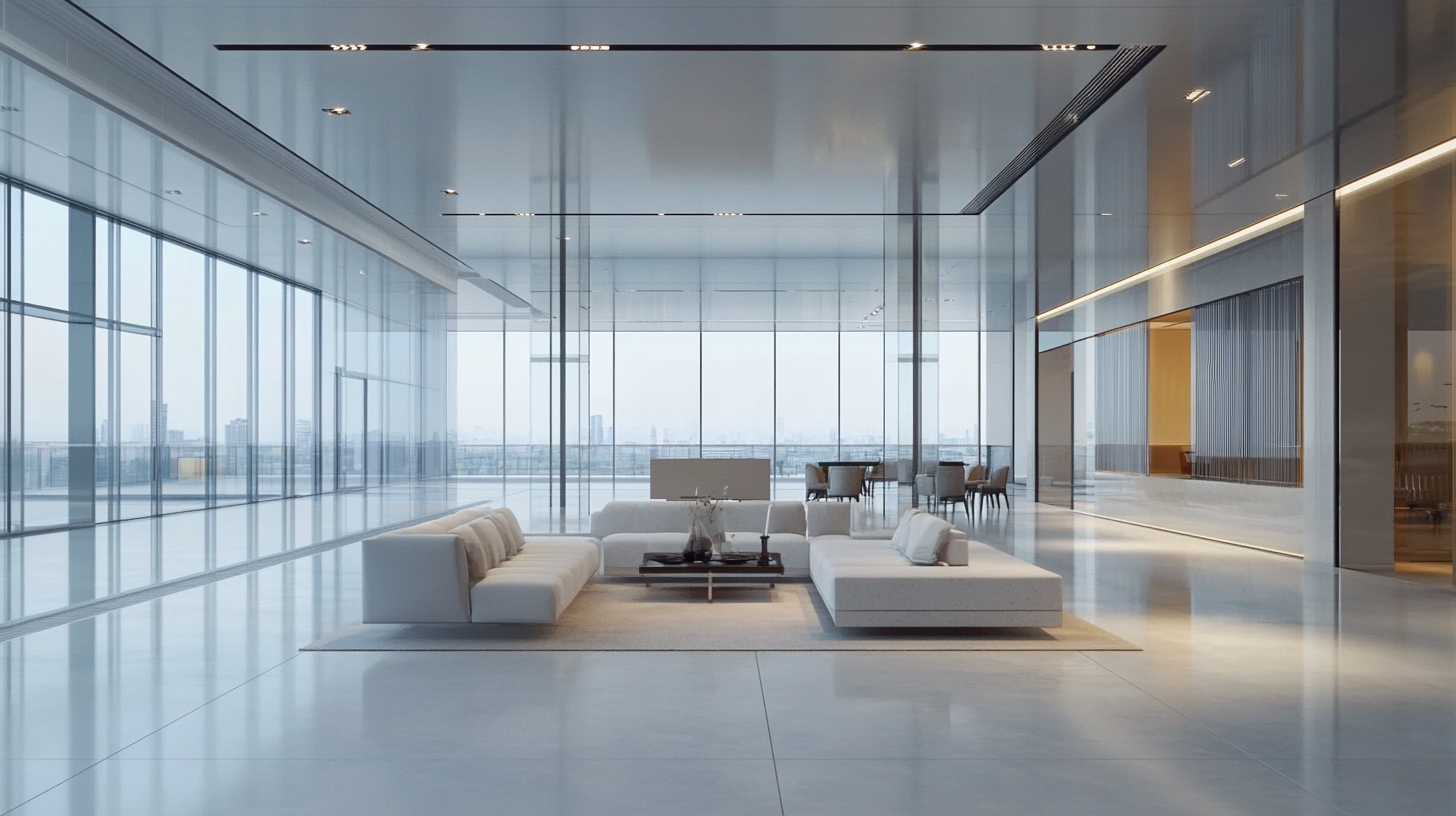Unlocking the Advantages of State-of-the-Art Window Fabrication Equipment for Global Buyers
In the rapidly evolving landscape of the global construction industry, the significance of advanced technology cannot be overstated. The demand for energy-efficient buildings is surging, with a reported increase of 30% in green building projects over the last five years, according to the Global Green Building Trends report 2022. This boom has spurred innovations in construction methodologies and materials, particularly in the domain of Window Fabrication Equipment. As architects, builders, and manufacturers strive for sustainability and aesthetic appeal, the role of high-performance window solutions cannot be overlooked.
Investing in state-of-the-art Window Fabrication Equipment not only enhances product quality but also streamlines production processes, thus reducing operational costs. Reports indicate that utilizing advanced fabrication technologies can improve manufacturing efficiency by up to 25%, as stated in the latest Market Research on Window Industry Trends. For global buyers, this represents an unprecedented opportunity to leverage cutting-edge equipment to stay competitive in a robust market, ensuring they deliver superior products that meet contemporary architectural demands and eco-friendly standards.

The Evolution of Window Fabrication Equipment in the Global Market
The evolution of window fabrication equipment has been remarkable, paralleling advancements in other industries like semiconductors and smart manufacturing. The global window and door frame market, valued at approximately USD 105 billion in 2024, is projected to grow to USD 148.8 billion by 2034, exhibiting a compound annual growth rate (CAGR) of around 3.5%. This growth indicates a significant demand for state-of-the-art fabrication equipment that can enhance efficiency and meet rising consumer expectations. Recent technological trends reveal a shift towards Industry 4.0, emphasizing smart factories that utilize automation and data exchange to improve production processes. These facilities are designed to minimize human error and maximize output quality, aligning with the needs of a rapidly evolving market. As manufacturers integrate advanced technology into window fabrication, they can expect refined manufacturing accuracy and increased operational efficiency. Moreover, the global supply chain landscape poses both challenges and opportunities for window fabrication equipment. As observed in various industries, including semiconductors, the necessity for adaptability in production and design strategies has never been more crucial. Businesses are keen to invest in cutting-edge technology that not only meets current demands but also anticipates future market trends, underscoring the importance of staying ahead in the competitive global market for window and door frames.

Key Features and Innovations in Modern Window Manufacturing Technology
Advancements in window manufacturing technology are pivotal to enhancing the overall efficiency and quality of modern architecture. The introduction of state-of-the-art window fabrication equipment offers global buyers numerous advantages, particularly in terms of precision, speed, and sustainability. Reports indicate that manufacturers employing advanced machinery can achieve a production increase of up to 30%, significantly reducing lead times and costs associated with traditional methods.
Key innovations in modern window manufacturing include automated cutting and assembly systems, which utilize robotics and artificial intelligence for unmatched accuracy. These systems allow for the minimization of waste, with studies showing a reduction of material waste by 15% when compared to conventional practices. Additionally, the latest glazing technology provides superior thermal insulation and soundproofing qualities, catering to the growing consumer demand for energy-efficient and environmentally friendly building solutions.
Moreover, the integration of smart manufacturing principles aligns with recent policy initiatives aimed at fostering high-quality economic development. Cities like Shenzhen are actively promoting smart manufacturing through educational collaborations and innovation-driven strategies, setting a benchmark for the industry. As stakeholders embrace these advanced tools and technologies, the window manufacturing sector is not only poised for growth but also positioned as a leader in sustainable practices within the global market.

Benefits of Investing in Advanced Window Production Machinery
Investing in advanced window production machinery brings numerous benefits that can significantly enhance operational efficiency and product quality. With state-of-the-art technology, manufacturers can achieve higher precision in fabrication processes, resulting in windows that not only fit perfectly but also enhance architectural aesthetics. Advanced machinery often incorporates automation and digital controls, reducing human error and ensuring consistent output. This precision is particularly important in today's market, where architectural standards are continually rising.
Moreover, modern window fabrication equipment offers improved energy efficiency, both in production and in the final product. Advanced machinery is designed to optimize energy use, allowing manufacturers to reduce waste and lower their overall operational costs. These machines are often equipped with features that enable the use of sustainable materials, aligning with the growing demand for eco-friendly construction solutions. By investing in such technology, companies not only meet consumer preferences but also contribute to environmental sustainability.
Another significant advantage is the enhanced speed of production. With automated processes and faster setup times, manufacturers can respond more quickly to market demands, reducing lead times and increasing their competitiveness. This agility allows businesses to take on larger projects and meet tight deadlines, ultimately leading to increased customer satisfaction. The integration of advanced window production machinery paves the way for innovation, supporting manufacturers in staying ahead in a rapidly evolving market.

How State-of-the-Art Equipment Enhances Product Quality and Efficiency
In today's competitive marketplace, state-of-the-art window fabrication equipment plays a crucial role in enhancing product quality and efficiency, ultimately providing global buyers with a significant edge. According to a recent report by Allied Market Research, the global window and door market is expected to reach $274 billion by 2026, driven largely by advancements in manufacturing technology. The adoption of cutting-edge fabrication equipment allows manufacturers to meet increasing demand while maintaining high standards of quality.
The utilization of automated fabrication systems and precision machinery significantly reduces production times. A study by the National Association of Home Builders highlights that implementing advanced equipment can lead to a reduction in production costs by up to 20%, enabling manufacturers to offer more competitive pricing. Moreover, such technology minimizes human error, resulting in better fitting windows and doors, which ultimately enhances customer satisfaction.
Additionally, state-of-the-art equipment allows for greater customization options, which is essential in attracting diverse buyers with specific needs. A report from MarketsandMarkets indicates that the custom window manufacturing market is projected to grow at a CAGR of 5.6% through 2025. The ability to swiftly adjust production lines to accommodate unique specifications not only boosts efficiency but also improves overall product quality, ensuring that each order meets rigorous standards. As manufacturers invest in the latest technologies, their capacity to deliver superior products in a timely manner positions them favorably in an ever-evolving global market.
Global Impact: The Role of Technology in Sustainable Window Solutions
The advent of advanced window fabrication equipment is playing a significant role in the global pursuit of sustainable solutions. As environmental concerns intensify, technology is emerging as a vital tool for manufacturers to create products that resonate with eco-conscious consumers. State-of-the-art equipment can streamline production processes, reduce waste, and enhance energy efficiency, making the entire lifecycle of window manufacturing more sustainable. This shift not only aligns with global sustainability goals but also addresses the pressing need for innovative solutions in an increasingly resource-constrained world.
Digital technologies further amplify these efforts by enabling real-time data collection and analysis, essential for understanding and mitigating environmental impacts. With a digital ecosystem in place, manufacturers can monitor emissions, optimize resource usage, and adapt their processes swiftly to minimize their ecological footprint. This strategic integration of technology and sustainability not only helps companies meet stringent regulatory requirements but also provides a competitive advantage in a marketplace that increasingly values green practices.
Moreover, the push for advanced window solutions is reflective of a broader commitment to achieving net-zero emissions across industries. By leveraging cutting-edge fabrication techniques and embracing sustainability as a core principle, businesses can contribute to global climate goals while also driving innovation and growth. As we continue to explore the intersection of technology and sustainability, it becomes clear that those who embrace these advancements will lead the charge toward a greener future for all.


